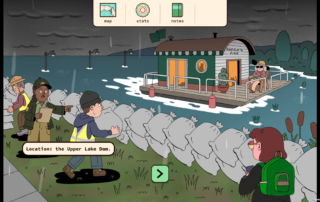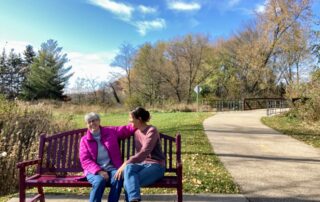This year marks a major anniversary for one of Wisconsin’s most famous fossils. But before they could celebrate, Madison geologists had to do a little detective work.
Each year, about 50,000 people visit the Geology Museum at the University of Wisconsin in Madison. And for the last 100 years, one attraction has stood out – the nearly 10-foot tall skeleton of the Boaz Mastodon.
“Our mastodon is our museum’s most iconic fossil and it’s arguably one of the most famous fossils in WI. It is the centerpiece of our skeleton room,” says museum curator Carrie Eaton.
Eaton has always liked geology. She fell in love with rocks and fossils from a young age.
“I absolutely adore Ice Age mega-fauna, I think they’re spectacular,” says Eaton.
In case you’ve forgotten (or never knew), mastodons look a lot like elephants, except hairier. For a few million years they roamed these parts in herds. They went extinct almost 12,000 years ago, when things were a little different in Wisconsin.
Mastodons, mammoths, giant beavers, giant ground sloth, musk ox, bison, caribou,” explains Eaton. “They all roamed Wisconsin at the time.”
The Boaz mastodon was named after a tiny village in Richland County where young boys found many of its bones in 1897. Its skeleton – which includes plaster replica bones – was installed in the museum in 1915. To prepare for the 100th anniversary, Eaton decided to do some research. What she found, however, led her down some interesting paths.
After combing through archives, dusty field manuals, and old photos, Eaton made a startling discovery. The mastodon’s bones appeared to come not from one animal but two – one from Boaz and another from a former hamlet known as Anderson Mills. And what’s more – she found a very old hand-written note indicating this might not be a mastodon at all, but a mammoth. And that would have been a huge deal.
“So seeing that word mammoth at the top of the page literally made me stop in my tracks and I thought, “oh no! What do we do now!” laughs Eaton. “I knew right away that we were going to have to sample for DNA. You know, it’s like, you see that, and you go, “Oh, that’s more work!” .
But after two years of research and lots of lab testing, the results were conclusive: the Boaz Mastodon was indeed comprised of two animals. And, yes, it was a mastodon.
The museum will keep calling it the Boaz Mastodon, though future visitors will get a slightly altered spiel from tour guides, explaining that the bones were round at two different sites in Wisconsin.
But Eaton hasn’t run out of questions. She still wonders if there’s more to unearth about the famous Ice Age beast, possibly in a field near you.
“And so I look at the skeleton and I can’t help but wonder, where’s the rest of it?” says Eaton. “I think there are a lot of megafauna fossils out there in the state of Wisconsin that have yet to be discovered.”











